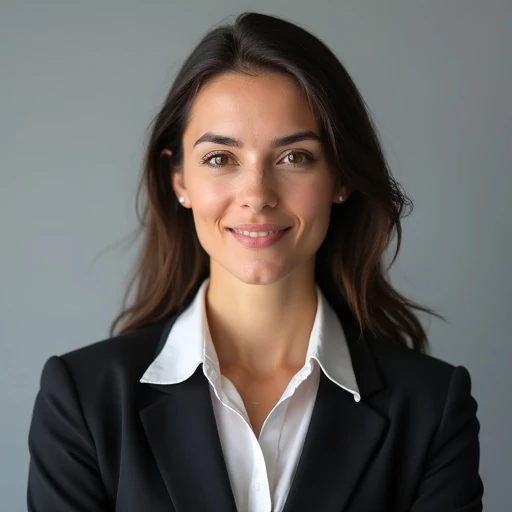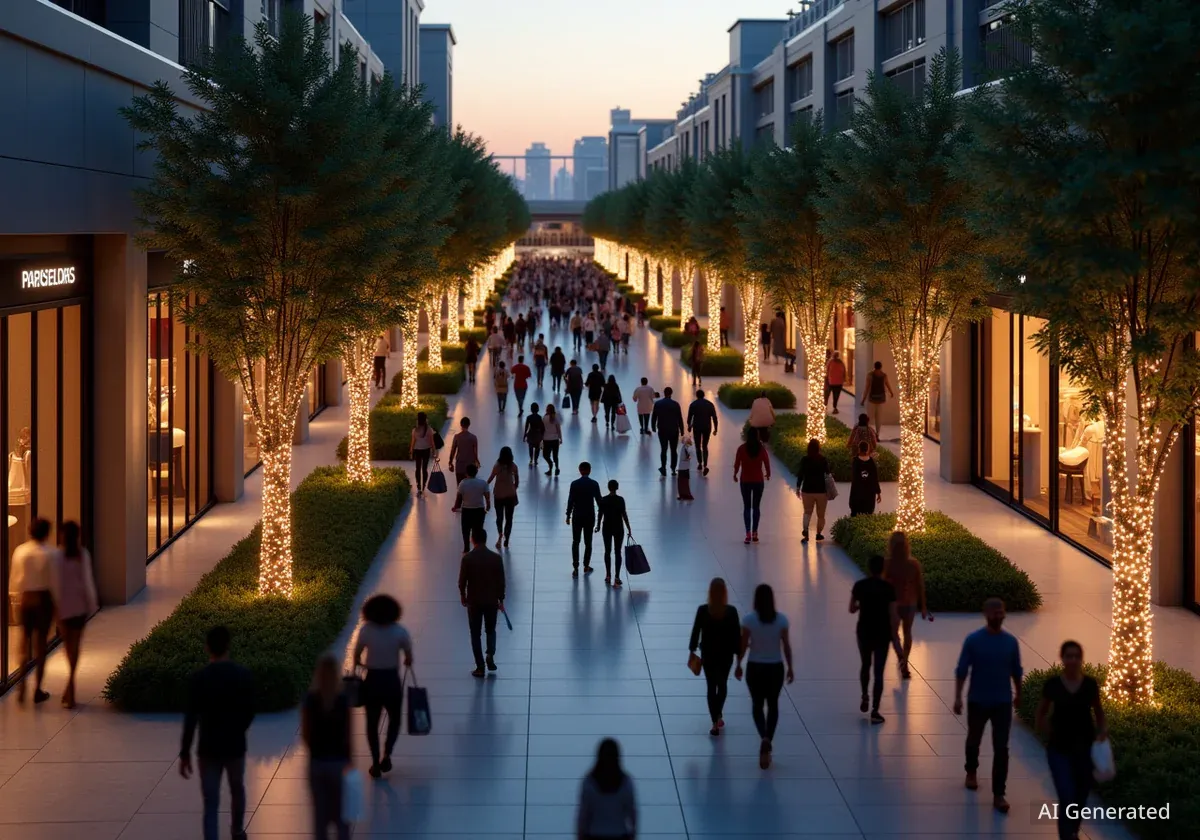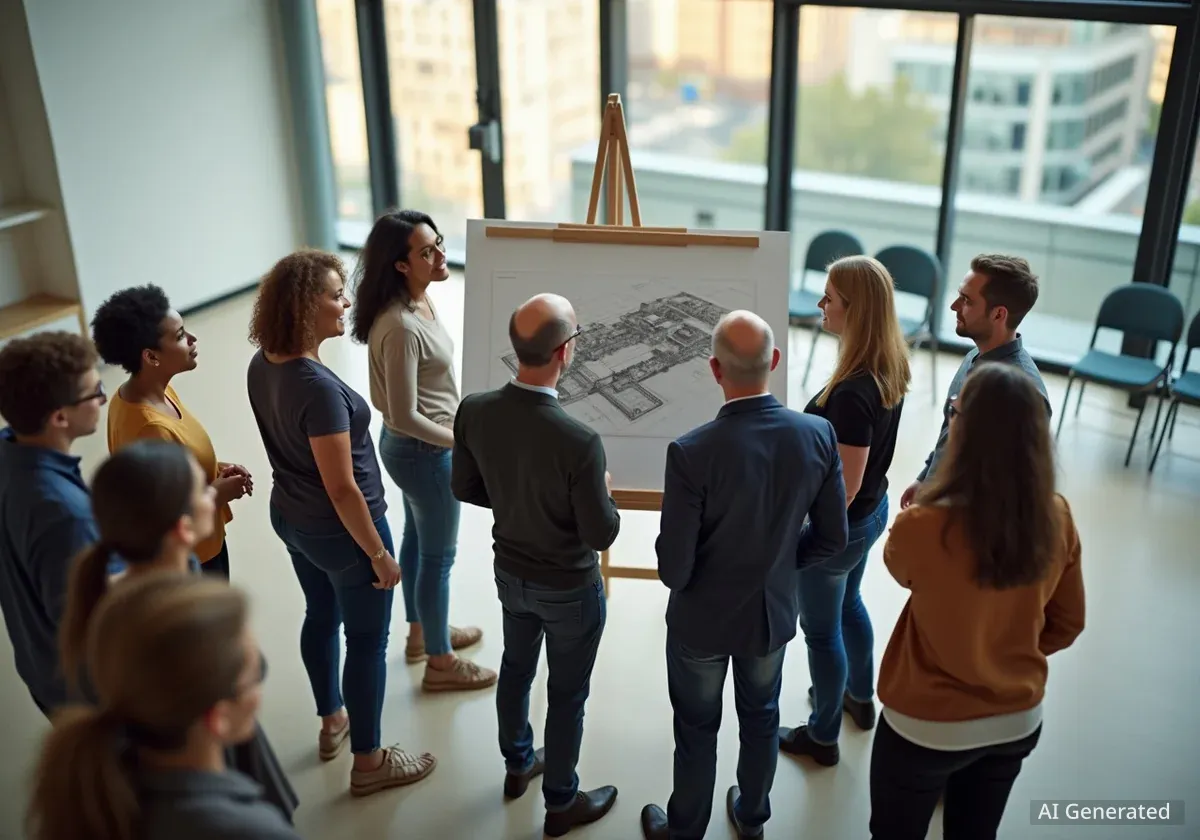Beverly Hills is poised for a significant transformation in its luxury retail and hospitality landscape. Developer Cain International has announced the first key tenants for its ambitious One Beverly Hills project, a move that signals the rise of new commercial centers set to redefine the city's traditional shopping districts.
Key Takeaways
- Cain International has confirmed Dolce & Gabbana, Casa Tua, and Los Mochis as initial tenants for its One Beverly Hills development.
- The 17.5-acre mixed-use project is part of a wave of new developments challenging the long-standing dominance of Rodeo Drive.
- Another significant project, the redevelopment of the Saks Fifth Avenue site, is also expected to alter the city's luxury retail map.
- Beyond Beverly Hills, other retail trends are emerging in Los Angeles, including boutique brand expansions on Melrose Place and major corporations like Gap Inc. refocusing their strategies.
One Beverly Hills Secures Premier Tenants
The developer Cain International has officially revealed the first group of brands that will occupy its landmark One Beverly Hills project. The announcement confirms that Italian luxury fashion house Dolce & Gabbana will be a major retail anchor.
Joining the fashion brand are two prominent hospitality and dining establishments. Casa Tua, known for its exclusive blend of restaurant, hotel, and private club experiences, will establish a presence. Additionally, the high-end Mexican-Japanese restaurant Los Mochis is set to open a location within the development.
These initial signings are critical for establishing the tone and prestige of One Beverly Hills, positioning it as a premier destination for high-end shopping and dining well before its completion.
What is One Beverly Hills?
One Beverly Hills is a large-scale, 17.5-acre mixed-use development located at the intersection of Wilshire and Santa Monica boulevards. The project is designed to include luxury retail stores, high-end residential units, a five-star hotel, and extensive botanical gardens, creating a new integrated commercial and lifestyle hub in the city.
A New Competitive Landscape for Luxury Retail
The emergence of One Beverly Hills is part of a broader trend that could reshape the luxury market in Beverly Hills. For decades, Rodeo Drive has been the undisputed center of high-end retail in Southern California. However, large-scale, integrated projects are creating new gravitational centers for shoppers and brands.
Challenging Traditional Shopping Corridors
The One Beverly Hills development, with its curated mix of retail, dining, and lodging, offers a different experience than a traditional high street like Rodeo Drive. By creating a self-contained luxury environment, it aims to capture visitor attention and spending for extended periods.
This model competes directly with the established formula of standalone boutiques that line the city's famous streets. The success of these new hubs will depend on their ability to offer unique experiences and a compelling mix of tenants.
Saks Fifth Avenue Redevelopment
Another major project set to influence the area is the redevelopment of the Saks Fifth Avenue property. This initiative also involves a mixed-use approach, combining retail with other elements to create a modern destination. Together with One Beverly Hills, it represents a significant investment in creating new commercial focal points away from the traditional Rodeo Drive axis.
Broader Retail Shifts Across Los Angeles
The changes in Beverly Hills reflect wider movements within the Los Angeles retail market. Different shopping districts are evolving, and major corporations are rethinking their product strategies to capture new growth areas.
Boutique Growth on Melrose Place
While large developments make headlines, specialized luxury corridors are also seeing new activity. For example, the luxury eyewear brand Ahlem recently opened its latest store on Melrose Place. This move is part of the brand's planned expansion and highlights the continued appeal of smaller, curated shopping streets for niche and independent luxury brands.
Melrose Place has cultivated a reputation as a destination for fashion-forward boutiques, offering a different atmosphere from the global brand power of Beverly Hills. This demonstrates a multi-layered retail ecosystem where different types of luxury experiences can coexist and thrive.
"The evolution of retail in Los Angeles isn't just about one new project; it's about the diversification of shopping experiences. From massive mixed-use destinations to hyper-curated boutique streets, the market is becoming more complex and segmented."
Corporate Strategy in Mainstream Retail
The trend of strategic realignment extends beyond the luxury sector. Gap Inc., the parent company of brands like Old Navy and Banana Republic, is making a concerted effort to grow its presence in the beauty and accessories markets. This move is a classic example of a large retailer seeking to diversify its revenue streams beyond its core apparel offerings.
To support this ambition, Gap Inc. has enlisted the expertise of two seasoned industry veterans: Reed Krakoff, a renowned designer and creative director, and John Demsey, a former executive at Estée Lauder. Their involvement signals a serious commitment to building credible and competitive beauty and accessories lines. This strategy aims to increase customer spending per visit and capture a larger share of the consumer's wallet in high-margin categories.
- Strategic Hires: Bringing in experts like Krakoff and Demsey provides immediate credibility and industry knowledge.
- Category Expansion: Moving into beauty and accessories is a common strategy for apparel companies to boost growth.
- Market Competition: Gap Inc. will face stiff competition from established beauty retailers and fast-fashion brands that have already integrated these categories.
These developments, from the ultra-luxury projects in Beverly Hills to strategic shifts at mass-market giants, illustrate a dynamic and rapidly evolving retail environment. Developers and brands alike are adapting to new consumer behaviors and seeking innovative ways to create compelling shopping destinations.





